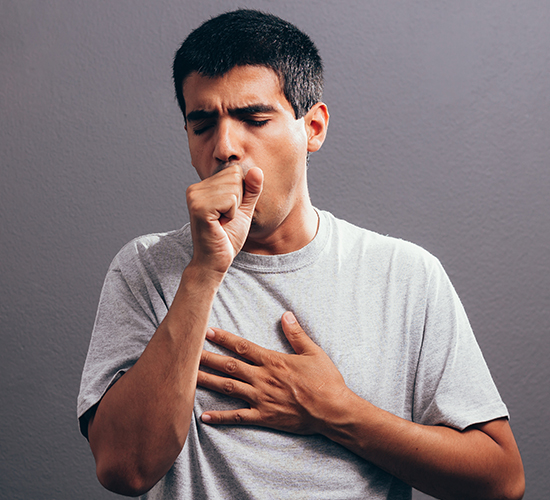When Is Coughing Up Of Blood An Emergency

Coughing up blood (hemoptysis) can create panic and concern among the individual and those around. It can be frightening, as the person won’t understand where the blood is coming from.
In the case of Hemoptysis, the bleeding occurs in the trachea, throat or bronchi of lungs. The coughed up blood may be mixed with phlegm or maybe dark red or pink. Hemoptysis is one of the important symptoms seen in people diagnosed with lung disorders, including lung cancer. Though coughing up blood is a symptom for lung cancer, it may not necessarily mean the presence of lung cancer.
On the other hand, when blood comes up in vomit from your esophagus (food pipe) or stomach, it is called a Hematemesis. Hematemesis is generally related to stomach ulcers, esophageal varices, blood disorder or alcohol abuse.
In general, if a person coughs up more than one teaspoon of blood then it indicates a medical emergency. Coughing up 1/3rd of a cup of blood is called massive hemoptysis and has been linked to a majority of deaths.
Hemoptysis Causes [1]
There could be various reasons for hemoptysis – bronchitis, COPD ( Chronic Obstructive Pulmonary Disorder), Congestive heart failure, cocaine use, lupus, lung cancer, parasitic infection, pneumonia, non-cancerous tumours in lungs, tuberculosis etc.
Sometimes, severe nosebleeds can drain blood in the trachea and may seem like hemoptysis.
Diagnosis
Doctors may often check you if you have breathing difficulties and ask you how much blood you have coughed up. If bleeding is persisting, the doctor will first control your bleeding and recommend a few diagnostic tests to determine the cause of hemoptysis. In the case of massive bleeding, intubation may become necessary.
They may ask a couple of questions such as:
- When did coughing occur?
- Did it happen before as well?
- Were you eating when coughing occurred?
- Do you suffer from any medical conditions?
- Do you smoke?
- Do any of your family members have lung cancer, bleeding disorders or bronchitis?
Diagnostic Tests
Tests for coughing up blood may include[1]:
- Chest X-ray – to check for any congestion in the lungs or presence of a mass in the chest
- CBC (Complete Blood Count) – To check the number of RBC (Red Blood Cells), WBC (White Blood Cells) and platelets in the blood
- Blood Chemistry Profile – to check electrolytes and kidney function
- Pulse Oximetry – to check the level of oxygen in your blood
- Bronchoscopy – identify the cause of hemoptysis by inserting a tube with a camera in the windpipe and airways
- CT scan – to get a detailed view of the chest and identify the cause of coughing up blood
Treatment[1]
The treatment options usually depend on the underlying cause and may include:
- Bronchial artery embolization
To identify the source of bleeding, a catheter is run through an artery in the leg that supplies blood to the lungs. The artery is blocked with a metal coil or other substances. This will curb the bleeding and other arteries will compensate for the blocked artery.[2]
- Bronchoscopy
Various techniques on Bronchoscopy are available to manage mild to moderate bleeding such as[3]:
- Endobronchial insertions – substances such as fibrinogen, oxidative regenerative cellulose are inserted via endoscopy to stop bleeding.
- Coagulation is done with argon plasma coagulation or photocoagulation
- Endobronchial stent placement – this is typically performed in bleeding due to lung cancer
- Surgery
Rarely performed, surgery is used to stop massive hemoptysis like in case of a trauma. Doctors can perform either a minimally invasive surgery or an open procedure to stop the coughing of blood[4].
References:
- www.ncbi.nlm.nih.gov/pmc/PMC5478790/
- www.ncbi.nlm.nih.gov/pmc/PMC4561266/
- www.ncbi.nlm.nih.gov/pmc/PMC5179455/